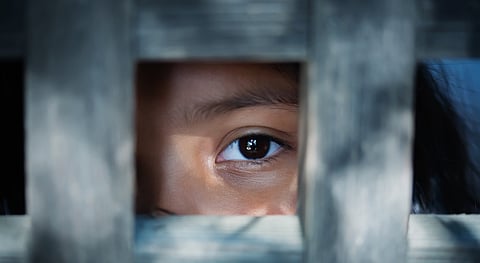An increase in the number of crimes does not necessarily mean India has become more hostile against its children
Going by the latest data released by the National Crime Records Bureau (NCRB, Crime In India 2023), a total of 177,335 cases of crimes against children were recorded in 2023, marking a 9.16 per cent rise from 2022.
However, an increase in the number of crimes committed against children usually depends on many factors including increased community awareness leading to enhanced trust in law enforcement and more proactive reporting due to improved access to legal remedies, according to Child Rights and You (CRY).
According to the NCRB 2023 data released by the Union Ministry of Home Affairs and analysed by CRY, on an average, 486 crimes were committed against children every day, meaning a crime was committed every three minutes in the country, over the same period of time.
When compared to the previous year (2022), crimes against children have shown an increase by 9.16 per cent. During this period (2023), the rate of cognisable crimes against children increased to 39.9 from 36.6 to 2022 (Rate of crime is population adjusted — it gives number of crimes for every 1 lakh population of children).
Further analysis highlights that crimes against children clocked nearly a ten-fold rise since 2005, when 18,700 cases were recorded. The upward trend accelerated after 2012-13, somewhat dipped temporarily during the COVID-19 years (2019-20), but has since surged again, reaching the all-time high of 177,000 cases in 2023. Overall, the trend follows an exponential growth path, with projections suggesting figures could cross 250,000 in the near future.
“While the government has taken many significant steps and systemic interventions to effectively address the overall safety and protection of children, the current trend underscores requirement of creating more awareness among civil society and other concerned stakeholders, apart from the government,” said Puja Marwaha, CEO, CRY.
According to the latest NCRB data, the top two major crime heads that witnessed maximum number of cases in 2023 are Kidnapping and Abduction of Children, and Crimes under POCSO (including Sec 4 & 6 of the POCSO Act). While a total of 79,884 cases were registered under Kidnapping and Abduction of Children accounting for 45.05 per cent of total crimes committed against children; 67,694 cases (38.17 per cent of total crimes against children) were booked under Crimes related to POCSO (including Sec 4 & 6 of the POCSO Act).
A deeper analysis of the data revealed that, in 2023, two of every five crimes against children were under the category of sexual offences. There were 70,053 cases of sexual offenses recorded against children in 2023, which was an increase from 66,996 in 2022 (a rise of five per cent over the previous year). This means, on an average, around 192 cases of sexual offences were recorded against children every day.
Among all sub-categories under sexual offences against children, crimes under POCSO (r/w Sec.376, 354, 509 IPC) witnessed the sharpest increase — going from 63,414 (2022) to 67,694 (2023) with a seven per cent increase. However, the percentage of sexual offences in total crimes against children slightly decreased from 41 per cent in 2022 to 40 per cent in 2023.
Data further revealed that in 96.6 per cent of the cases under POCSO Act (Sec 4 and 6), the offender was known to the victim. While only 1,358 cases were registered involving offenders who were unknown to or unidentified by the victims, a whopping 39,076 cases involved family members, family friends, neighbours, online friends and the likes as offenders. Data also suggests that more than 98 per cent among all victims were girls, when it came to sexual offences against children. “This calls for building greater public awareness, creating an environment that encourages people to break the culture of silence and come forward to make it a better place for children, particularly girls,” Puja Marwaha said.
However, according to CRY, an increase in the number of crimes cannot be always equated to solely as an indication of the environment turning more hostile against children. From a statistical perspective, the association between registered cases and the actual number of crime incidences may be shaped by confounding multiple factors such as greater public awareness of child protection laws, improved trust in law enforcement, and enhanced access to legal remedies. Hence, these figures should be viewed as indicative of both the occurrence of crime and the increasing responsiveness of communities and institutions in seeking justice for children, rather than as a simple causal measure of rising crimes.
Abhik Bhattacharya is Associate General Manager, Media Relations, Research and Knowledge Exchange, CRY – Child Rights and You
Views expressed are the author’s own and don’t necessarily reflect those of Down To Earth


